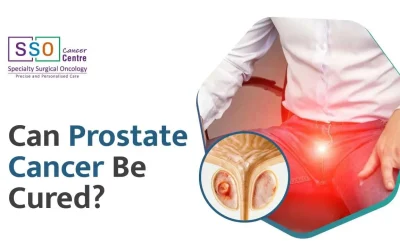Dr. Niharika Garach
Survival Rates for Endometrial Cancer

Endometrial cancer, also known as uterine cancer, is a significant health concern worldwide. As one of the most common gynecological cancers, it predominantly affects women in their postmenopausal years, although it can occur at any age.
Every year, thousands of new cases are diagnosed, making it a critical area of focus in women’s health.
The endometrium is the lining of the uterus, and when cancerous cells develop in this layer, it results in endometrial cancer.
The exact cause remains unknown, but factors like hormonal imbalance, obesity, and genetic predisposition can increase the risk. Symptoms often include abnormal vaginal bleeding, pelvic pain, and difficulties during urination.
Understanding survival rates for endometrial cancer is crucial for those diagnosed with the disease.
These statistics provide a broader perspective on the prognosis and can guide patients and their families in making informed decisions about treatment options.
It’s important to remember, however, that survival rates are based on large population groups and may not predict an individual’s outcome accurately.
Each person’s experience with endometrial cancer can vary widely based on factors such as the stage of the cancer at diagnosis, the individual’s overall health, and the specific treatment plan.
In the following sections, we will delve deeper into the specifics of endometrial cancer, including its types, stages, risk factors, and treatment options.
We will also discuss the various factors influencing survival rates, underscoring the importance of early detection and intervention in improving outcomes.
Defining Survival Rate in Cancer
For example, a 75% five-year survival rate means that an estimated 75 out of 100 people are alive five years after being diagnosed with that cancer at 5 yearsThese rates are gathered from historical data, typically collected over many years, and are based on large groups of people. However, it’s important to note that these statistics may not reflect individual outcomes. Everyone’s situation is unique, and numerous factors can influence a person’s survival, such as their overall health, the stage of the cancer at diagnosis, the type of treatment received, and their response to the treatment. While survival rates can provide valuable insights, they should not be used to predict a specific individual’s prognosis. Instead, they should be seen as a tool that can help patients and their families understand the disease better and discuss their situation more accurately with their oncologists. It’s always best to consult with your best endometrial cancer doctor or cancer expert for a more personalized understanding of your prognosis.
Factors Influencing Survival Rates
- Stage at Diagnosis: The stage of cancer at the time of diagnosis plays a crucial role in determining survival rates. Early detection often leads to better outcomes, as the cancer is likely to be localized and hasn’t spread to other parts of the body. In contrast, later stages of cancer that have spread beyond the uterus are more challenging to treat, potentially resulting in lower survival rates.
- Grade of the Tumor: The grade of the tumor refers to how much the cancer cells resemble normal cells when viewed under a microscope. Higher-grade tumors tend to be more aggressive and proliferate faster than lower-grade tumors, leading to worse prognosis and potentially lower survival rates.
- Age and General Health: Younger patients and those in good overall health typically have better survival rates. This is because they are often more resilient and able to withstand aggressive treatment protocols better than older or less healthy individuals.
- Histologic Subtype: Endometrial cancer can be categorized into different subtypes based on the appearance of the cancerous cells. Some subtypes are more aggressive and resistant to treatment than others, thus affecting the prognosis and survival rates.
Also, Read- Endometrial Cancer Risk Factors
The Importance of Support and Early Detection
Expertise in Endometrial Cancer (uterine Cancer)Treatment
Conclusion
Diet to Reduce Colorectal Cancer risk
HOME Videos Diet to Reduce Colorectal Cancer Risk AuthorSurgical Oncologist MBBS, MS, MChKnow the...
Thyroid Cancer: Types, Diagnosis & Treatment
HOME Videos Thyroid Cancer: Types, Diagnosis & Treatment AuthorSurgical Oncologist MBBS, MS,...
Does Robotic Surgery Improve Patient survival?
HOME Videos Does Robotic Surgery Improve Patient Survival AuthorSurgical Oncologist MBBS, MS,...
Prostate Cancer: Warning Signs and Early Detection
Prostate cancer warning signs, risk factors, and early detection methods. Common symptoms and when to seek medical attention
Prostate Cancer Treatment: Types, Options, and Side Effects
Prostate cancer treatment: Understand types, options, side effects, and decision-making. Prostate cancer types are adenocarcinoma and neuroendocrine carcinoma.
Can Prostate Cancer Be Cured? Treatment and Prognosis
Comprehensive guide on prostate cancer: understanding, treatment options, prognosis, prevention, and ongoing research for informed decisions.


 Blogs
Blogs





